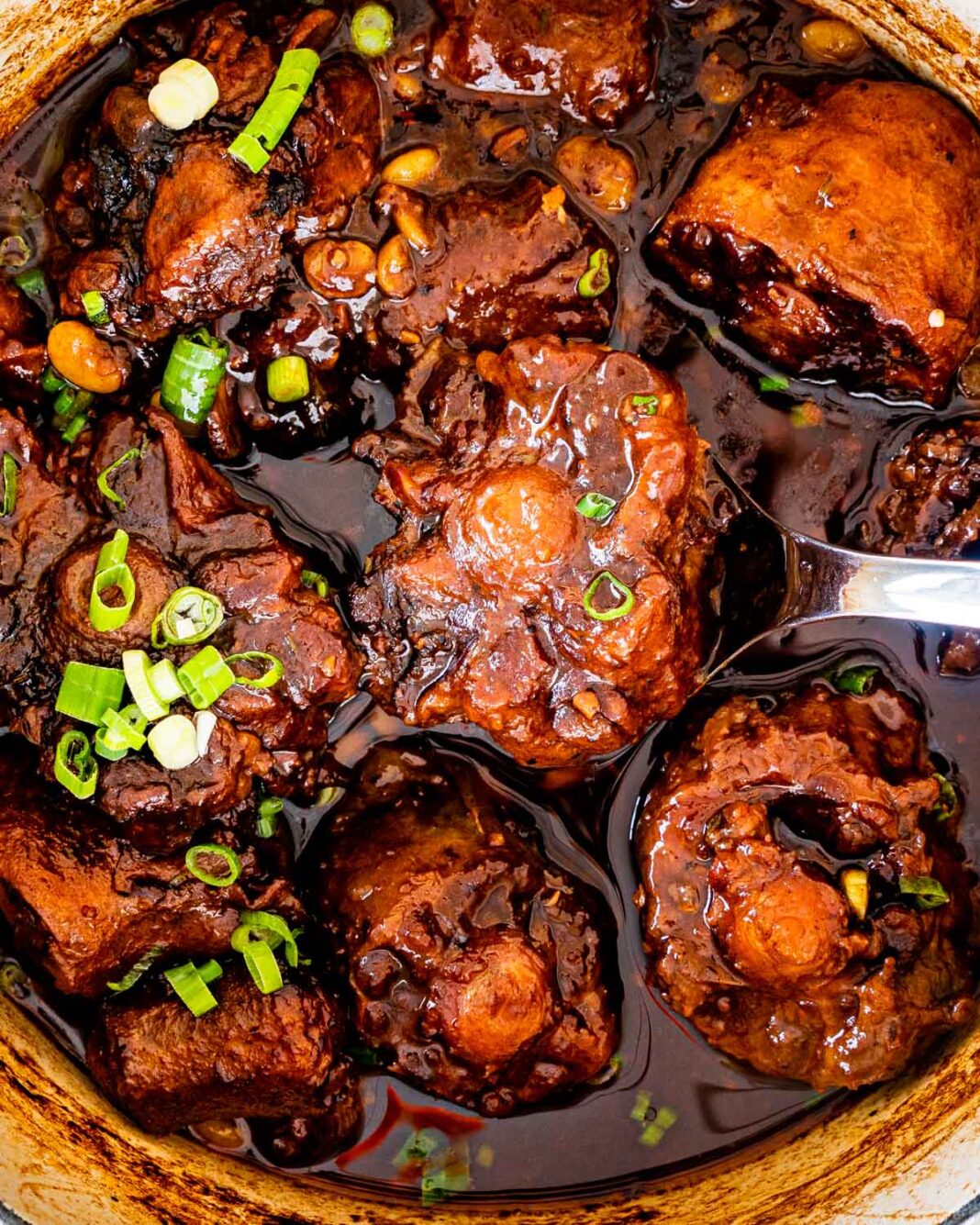Introduction to Oxtail
Oxtail, a term that originally referred to the tail of an ox, is a popular cut of meat used in many cuisines worldwide. Today, it comes from the tail of cattle, regardless of the animal’s gender. Known for its rich flavor and tender texture when slow-cooked, oxtail has gained a reputation as a versatile and affordable ingredient. Whether used in soups, stews, or braises, this cut brings a unique depth to any dish it is featured in.
History and Origins of Oxtail
Oxtail has been enjoyed in many cultures throughout history, particularly in regions where no part of the animal goes to waste. Its popularity dates back to when people used every part of an animal for food, a practice that continues in some areas to this day. Historically, oxtail was considered a “peasant” food because it required long, slow cooking to tenderize, making it affordable and accessible to poorer households.
The practice of cooking spread from Europe to other parts of the world through trade and colonization, and today, is enjoyed in a wide variety of cuisines, from the Caribbean to Asia.
Nutritional Value of Oxtail
Oxtail is more than just a flavorful ingredient; it is also packed with essential nutrients. Some of the nutritional highlights include:
- Protein: is rich in protein, which is important for muscle growth and repair.
- Collagen: This cut contains a significant amount of collagen, which can promote joint and skin health.
- Iron: is an excellent source of iron, crucial for maintaining healthy red blood cells.
- Zinc: provides zinc, a mineral that supports immune function and metabolism.
Despite its nutritional benefits, is also high in fat, so it’s best consumed in moderation as part of a balanced diet.
Preparing Oxtail: Cooking Techniques
One of the most appealing aspects of is its versatility in cooking. However, to get the most out of this flavorful cut, slow-cooking methods are key. Here are some of the most common techniques for preparing :
Braised Oxtail
Braising involves browning the on all sides, then slowly simmering it in liquid (such as broth, wine, or tomatoes) for several hours. This method breaks down the tough connective tissues, resulting in tender, melt-in-your-mouth meat. Braised is commonly served with mashed potatoes, rice, or vegetables.
Oxtail Soup
Oxtail soup is a traditional dish in many cultures, from Chinese to Jamaican cuisine. The tail is simmered in water with vegetables and spices for several hours, allowing the collagen and bone marrow to infuse the broth with flavor and nutrients. The result is a rich, hearty soup that is both comforting and nutritious.
Stewed Oxtail
In stewed recipes, the meat is slow-cooked with various vegetables, herbs, and spices in a flavorful sauce. This is a popular method in Caribbean and African cuisines. The slow-cooking process ensures the meat becomes tender while absorbing the flavors of the stew.
Oxtail Around the World
Though may not be as common in Western cuisines as other cuts of beef, it holds a special place in global culinary traditions. Here’s a look at how is enjoyed in different parts of the world:
Jamaican Oxtail Stew
Jamaican stew is a staple in Caribbean cuisine. The result is a rich, hearty dish that pairs well with rice and peas.
Korean Oxtail Soup (Kkori Gomtang)
In Korea, oxtail is used to make a comforting soup called Kkori Gomtang. The oxtail is simmered in water for hours, resulting in a milky, nutrient-rich broth. The dish is often served with rice, green onions, and salt for seasoning.
Italian Oxtail (Coda alla Vaccinara)
In Italy, is featured in the traditional Roman dish, Coda alla Vaccinara. The tail is braised in tomatoes, red wine, and vegetables such as celery and carrots. This slow-cooked dish is known for its deep, savory flavor and is typically served with polenta or pasta.
Spanish Rabo de Toro
In Spain, oxtail is used in Rabo de Toro, a slow-cooked stew with red wine, onions, garlic, and carrots. Originating from Andalusia, this dish was traditionally made after bullfights using the tails of bulls. Today, it’s a beloved comfort food across the country.
Tips for Buying and Storing Oxtail
When purchasing it, you should look for pieces that have a good balance of meat and bone.
To store , keep it in the refrigerator for up to two days or in the freezer for up to six months. If freezing, ensure it’s well-wrapped to prevent freezer burn.
Health Considerations
While oxtail offers a range of nutritional benefits, it is also high in fat, particularly saturated fat, which can contribute to heart disease if consumed in large amounts. As a result, it’s important to enjoy oxtail in moderation and as part of a balanced diet that includes plenty of fruits, vegetables, and whole grains.

You can also trim excess fat from the oxtail before cooking to make the dish a bit healthier. Additionally, allowing the dish to cool after cooking and skimming off any fat that rises to the surface can reduce the fat content.
Conclusion: The Versatility of Oxtail
Oxtail may not be the most common cut of meat, but its rich flavor and tender texture make it a worthwhile addition to any culinary repertoire. From comforting soups to hearty stews, brings a depth of flavor that is hard to match. Whether you’re cooking up a Jamaican stew, an Italian braise, or a Korean soup, will elevate your dish to a whole new level of deliciousness.


